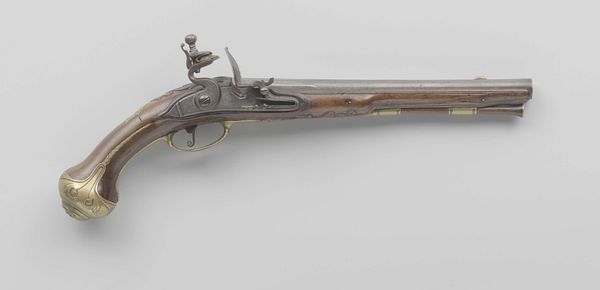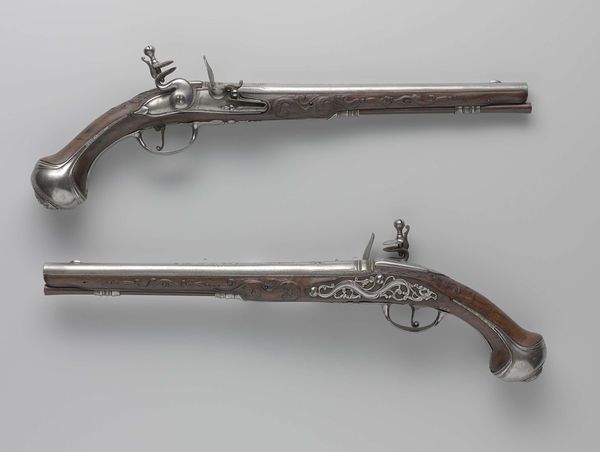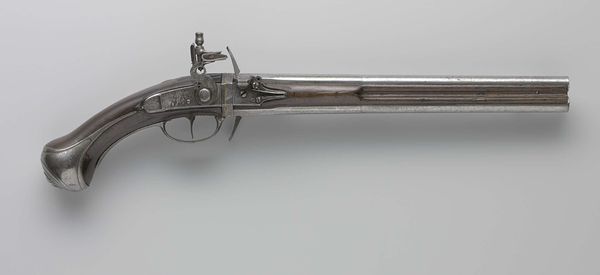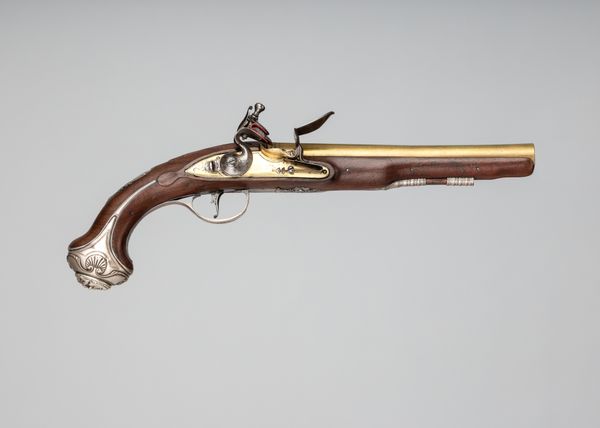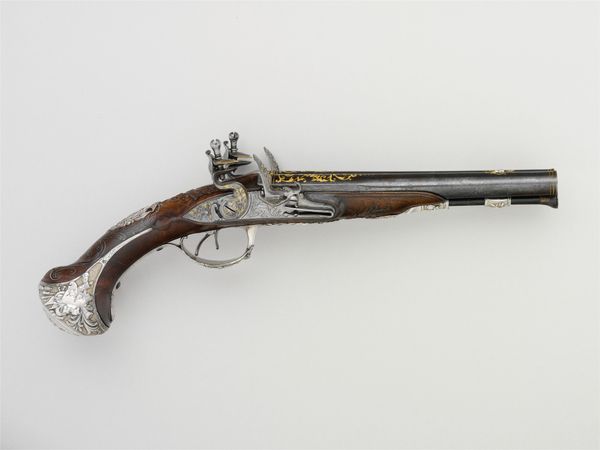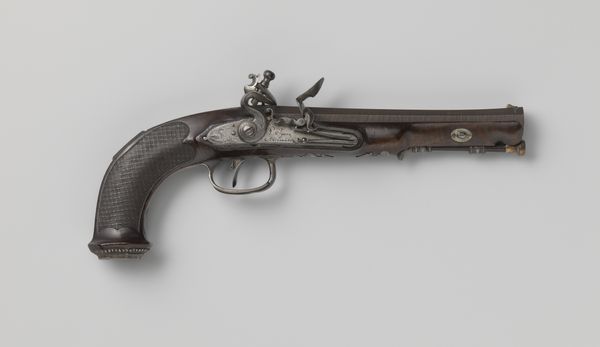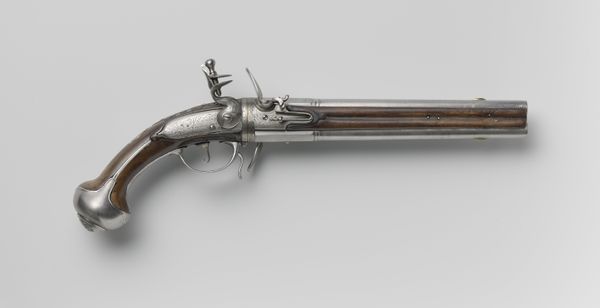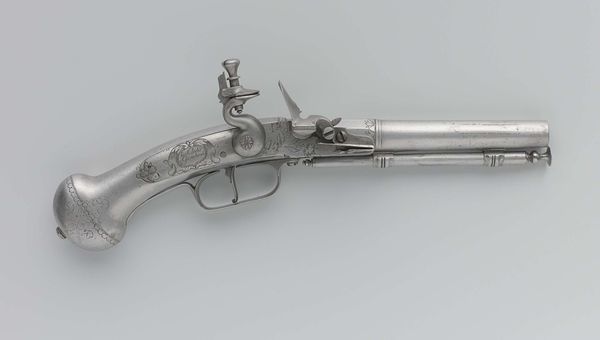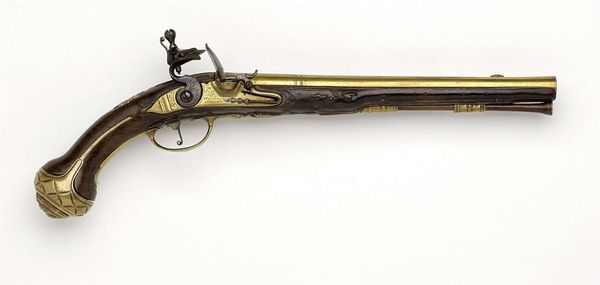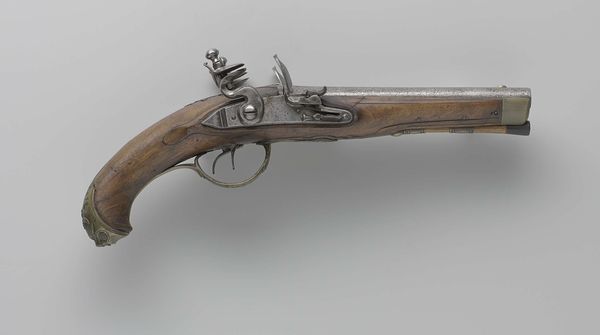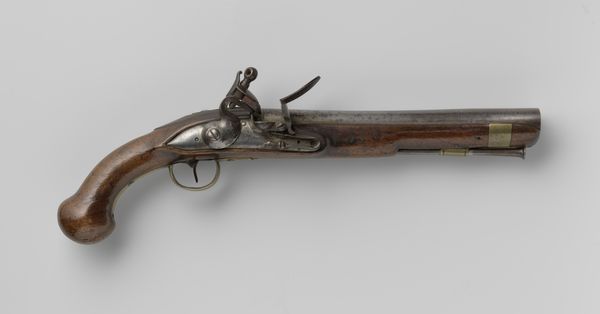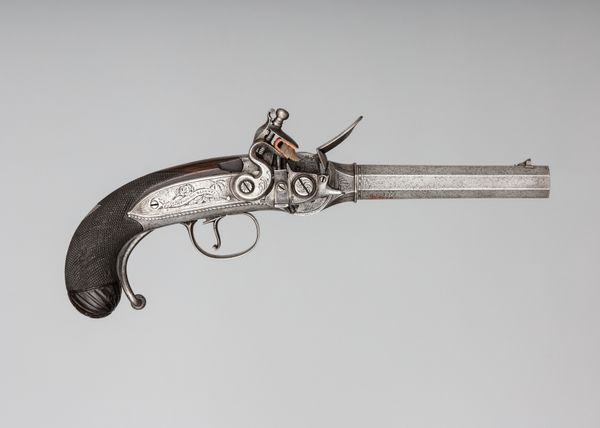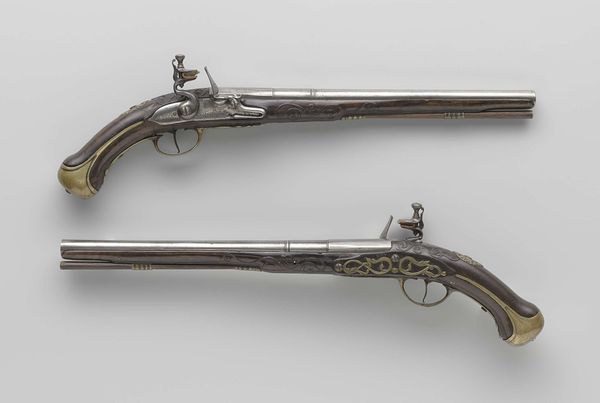
silver, metal, gold, sculpture
#
silver
#
metal
#
sculpture
#
gold
#
england
#
sculpture
#
history-painting
Dimensions: L. 15 7/8 in. (40.3 cm); L. of barrel 10 1/4 in. (26.0 cm); Cal. .46 in. (11.7 mm)
Copyright: Public Domain
Curator: Here we have Gilles Michel Louis Moutier-Le Page’s “Percussion Exhibition Pistol,” crafted in 1851. The Met houses this striking example of metalworking, featuring silver and gold in its construction. Editor: It's remarkably ornate for a weapon, isn’t it? My immediate impression is of intricate excess – the sort of object made to be displayed rather than used. Curator: Precisely! Notice the detailed engraving along the barrel, balanced by the sculpted dragon forming the hammer. The grip’s lavish application of gold filigree also merits careful attention. It’s all meticulously balanced to create a cohesive whole. Editor: Balance maybe, but there’s a violence implied by this extreme luxury that cannot be ignored. We have a symbol of deadly force disguised, or rather elevated, into high art. What does it mean to enshrine power in this way? The craftsmanship suggests not just wealth but also perhaps a glorification of colonial might when so many were denied resources? Curator: But doesn’t the detailed ornamentation serve to undermine its functionality, its potential for violence? The transformation into something decorative challenges that intrinsic purpose; it is primarily about aesthetic qualities and artistic expression rather than solely about weaponry. The emphasis becomes the design itself. Editor: I don’t disagree, and yet I also feel the necessity to address the embedded message: who could afford this luxury object in 1851, and whose subjugation enabled the acquisition of that wealth and materials? Surely that is essential to a thorough appreciation of the object's complexities. Curator: The pistol incorporates many of the stylistic and decorative preferences prevalent in England at the time. The sinuous forms echo prevailing Rococo revivals, and the detailing represents a level of skill and artistry rarely observed today. Editor: It definitely provides ample evidence for considering social strata and imperial reach within a wider view of English society at the time. These weapons were instruments of dominance in far more ways than simply on the battlefield. It's a visual declaration. Curator: It's difficult to fully disconnect the object from these layers of interpretation. Regardless, consider the artisan’s accomplishment. The craftsmanship evident here offers insights into formal structure in that period, revealing principles applicable across other media. Editor: An interesting contradiction—violence made beautiful. But I hope by questioning such beauty we learn not only more about the artwork, but about ourselves.
Comments
No comments
Be the first to comment and join the conversation on the ultimate creative platform.
